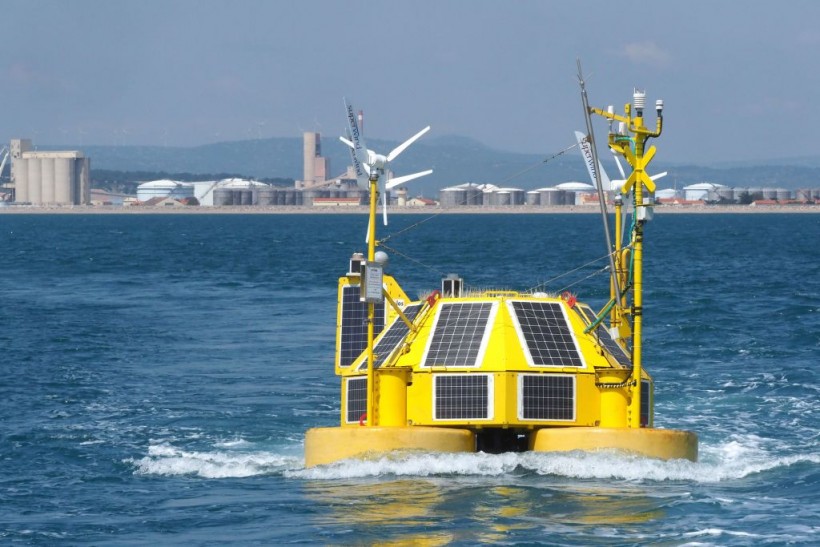The wave documented in 2020 has recently been confirmed for being proportionately the most extreme rogue wave ever reported, a record-breaking occurrence.
According to a CNN report, even though it happened in November 2020, the study verifying it was only released early this month. The rogue wave that measured 58 feet tall was recorded off the coast of Vancouver Island, which broke the record for proportionality at thrice the size of waves surrounding it.
One of the lead researchers on rogue waves at the University of Victoria, Johannes Gemmrich, said only a few rogue waves in high sea states had been directly seen, and none of them was of this magnitude. He added the possibility of such occurrence taking place is "one in 1,300 years.
.
ALSO READ: Ocean Oil Spills Photooxidizes Much Faster Than Previously Thought

The floating sensor buoy designed to measure the winds and calculate the movements of waves and currents is pulled by a barge to the future location of a marine wind farm off Port-la-Nouvelle, southern France, in 2018.
Rogue Wave
Scotty Beatty, CEO of the company MarineLabs, operating the sensor buoy, which measured the described a rogue wave as "exactly how it sounds," which is "unexpectedly terrifying."
He continued describing the 2020 rogue wave saying, it looks like a huge four-story lump that sticks out of the water with a huge peak and big troughs before it.
In the last few decades, what was then known as a marine legend has now been acknowledged by scientists as a real occurrence.
According to the National Oceanic and Atmospheric Association, rogues, which scientists also call "extreme storm waves," are those waves greater than double the size of surrounding waves, are quite volatile and frequently occur unexpectedly from directions aside from prevailing waves and winds. Meaning, Gemmrich clarified that a rogue wave is, in fact, only a wave that's large compared to the surrounding wave field.
A Record-Breaking Magnitude
Whereas the wave reaching a four-story height equivalent is certainly impressive, its magnitude being thrice that of its surrounding waves. The Draupner Wave," the first rogue wave recorded, was measured in the mid-1990s of the coast of Norway at 84 feet with surrounding waves of roughly 40 feet, which makes it the original wave about double the size of those surrounding it.
This record-breaking wave in 2020 measured at nearly 58 feet compared to the waves around it of roughly 20 feet that blow the original proportions out of the water.
The rogue wave in the recent research published in Scientific Reports was measured using a MarineLabs buoy roughly seven kilometers off of the coast of Ucluelet, British Columbia.
Potentially Posturing a Substantial Threat to Marine Operations
Batty pointed out that such waves can pose a substantial threat to marine operations and the public because of their enormous power and lack of expectation.
These waves, according to Gemmrich, are unexpected; thus, the vessel operator has a little warning. If it is high enough that it can result in some damage to the vessel, he has no time to change passage or respond to it.
The lead researcher also wanted to emphasize that one common misapprehension is that rogue waves are "not to be mistaken for tsunamis." However, he added, both are known for their being large waves; the way they're coming about is different.
Essentially, rogue waves are produced by wind, so they are considered as just an infrequent occurrence of wind-generated waves.
On the other hand, Tsunamis are produced most commonly by an underwater earthquake, earthquake, or as what has recently occurred, a volcanic eruption.
Related information about the record-breaking rogue waves is shown on Global News's YouTube video below:
RELATED ARTICLE: Phytoplankton Genes Used by Researchers to Monitor Ocean Conditions
Check out more news and information on the Oceans in Science Times.














